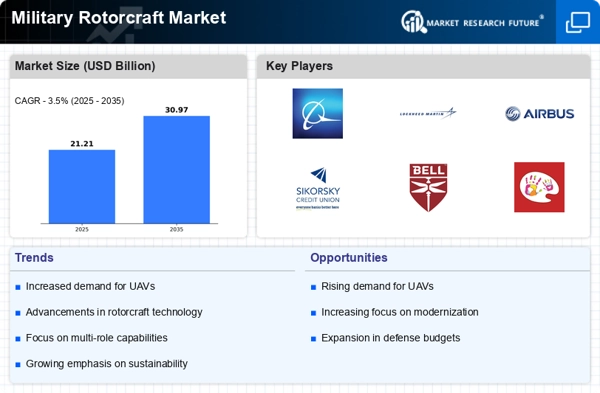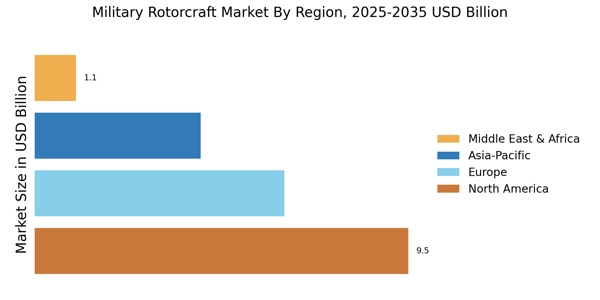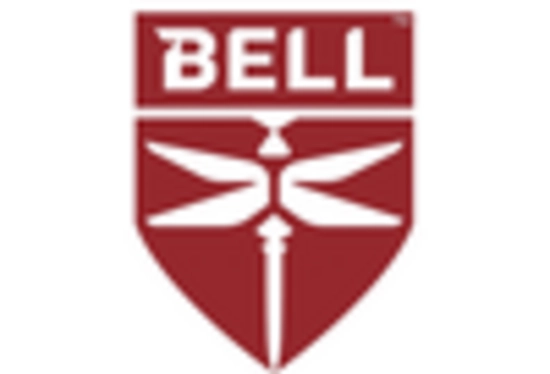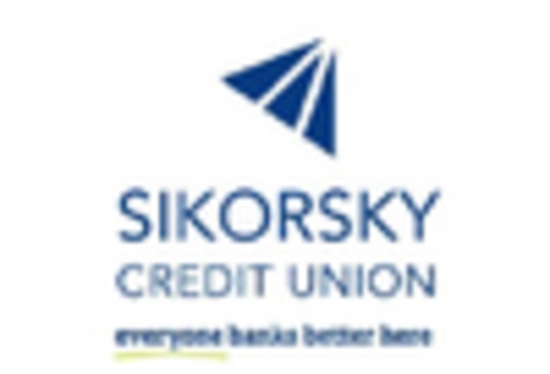Increased Defense Budgets
The Military Rotorcraft Market is significantly influenced by the rising defense budgets across various nations. Governments are allocating more resources to enhance their military capabilities, which includes investing in advanced rotorcraft. For example, recent reports indicate that defense spending in several countries has increased by an average of 3% annually, with a notable portion directed towards rotorcraft procurement and modernization. This trend is likely to continue as geopolitical tensions rise, prompting nations to bolster their aerial capabilities. The increased funding not only supports the acquisition of new rotorcraft but also facilitates upgrades to existing fleets, thereby driving growth in the Military Rotorcraft Market.
Focus on Indigenous Solutions
The Military Rotorcraft Market is witnessing a growing emphasis on indigenous solutions, as countries strive to develop and manufacture their own rotorcraft. This trend is driven by the desire for self-reliance and reduced dependency on foreign suppliers. Nations are investing in local defense industries to create rotorcraft that meet specific operational requirements. For instance, several countries have initiated programs to develop indigenous helicopters, which are expected to enter service in the coming years. This focus on local production not only stimulates economic growth but also enhances national security by ensuring that critical military assets are produced domestically. The potential for collaboration between government and private sectors in this area is substantial.
Integration of Unmanned Systems
The Military Rotorcraft Market is increasingly integrating unmanned systems into traditional rotorcraft operations. The incorporation of unmanned aerial vehicles (UAVs) and autonomous systems is transforming how military operations are conducted. This integration allows for enhanced reconnaissance, surveillance, and logistical support, thereby increasing the effectiveness of manned rotorcraft. Recent studies indicate that the market for unmanned rotorcraft is expected to grow significantly, with estimates suggesting a potential increase of 20% in the next five years. This trend highlights the military's commitment to leveraging technology to improve operational capabilities and reduce risks to personnel, ultimately reshaping the landscape of the Military Rotorcraft Market.
Rising Demand for Multi-Role Rotorcraft
The Military Rotorcraft Market is increasingly characterized by a rising demand for multi-role rotorcraft that can perform various missions. These versatile aircraft are capable of conducting transport, reconnaissance, and combat operations, making them invaluable to military forces. The trend towards multi-role capabilities is evident in recent procurement strategies, where militaries are seeking rotorcraft that can adapt to different operational scenarios. Market analysis suggests that the demand for such rotorcraft is expected to grow, with projections indicating that multi-role helicopters could account for over 50% of total rotorcraft sales in the next five years. This shift reflects a broader strategy to maximize operational flexibility and efficiency.
Technological Advancements in Rotorcraft Design
The Military Rotorcraft Market is experiencing a surge in technological advancements that enhance the capabilities of rotorcraft. Innovations such as fly-by-wire systems, advanced avionics, and improved rotor designs are being integrated into new models. These advancements not only improve performance but also increase operational efficiency. For instance, the introduction of composite materials has led to lighter and more durable rotorcraft, which can operate in diverse environments. The market is projected to grow as these technologies become standard in military operations, with estimates suggesting a compound annual growth rate of around 4.5% over the next decade. This trend indicates a shift towards more sophisticated rotorcraft that can meet the evolving demands of modern warfare.


















Leave a Comment